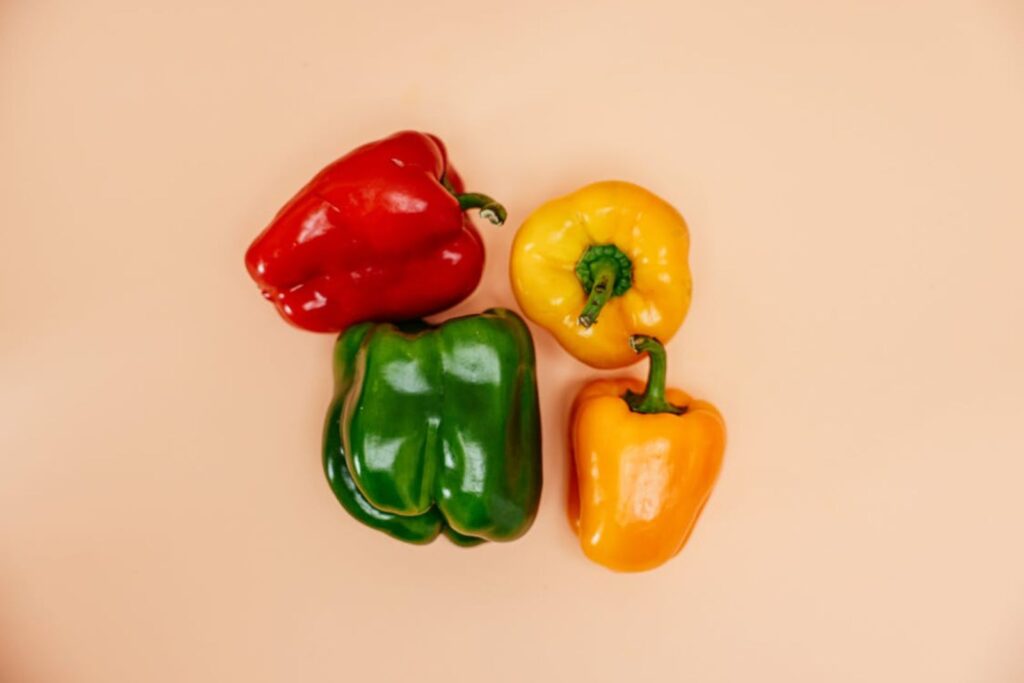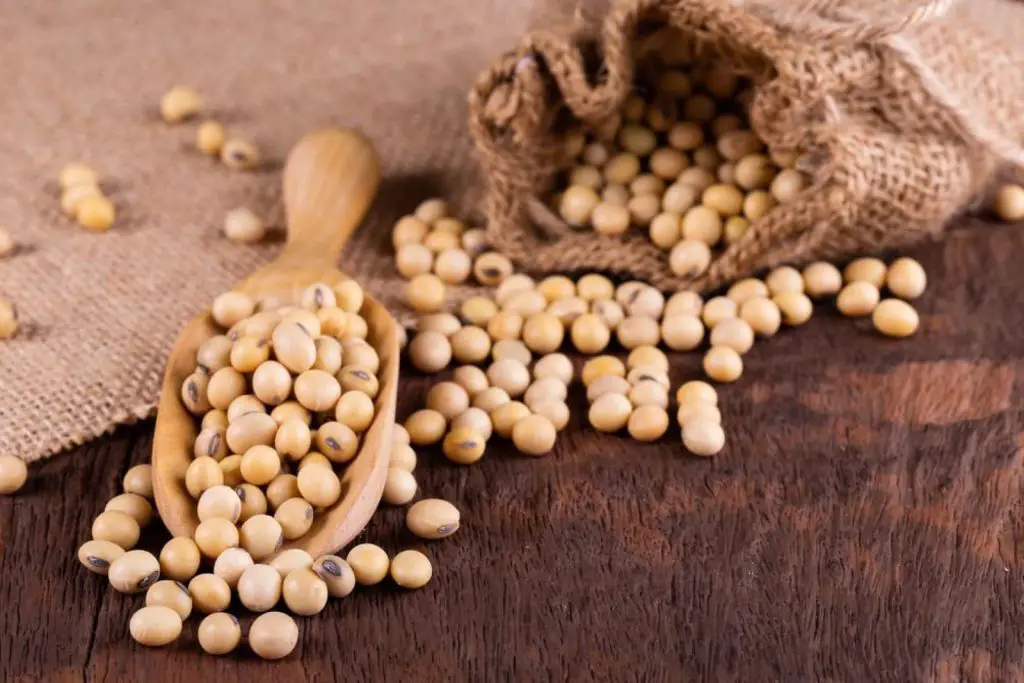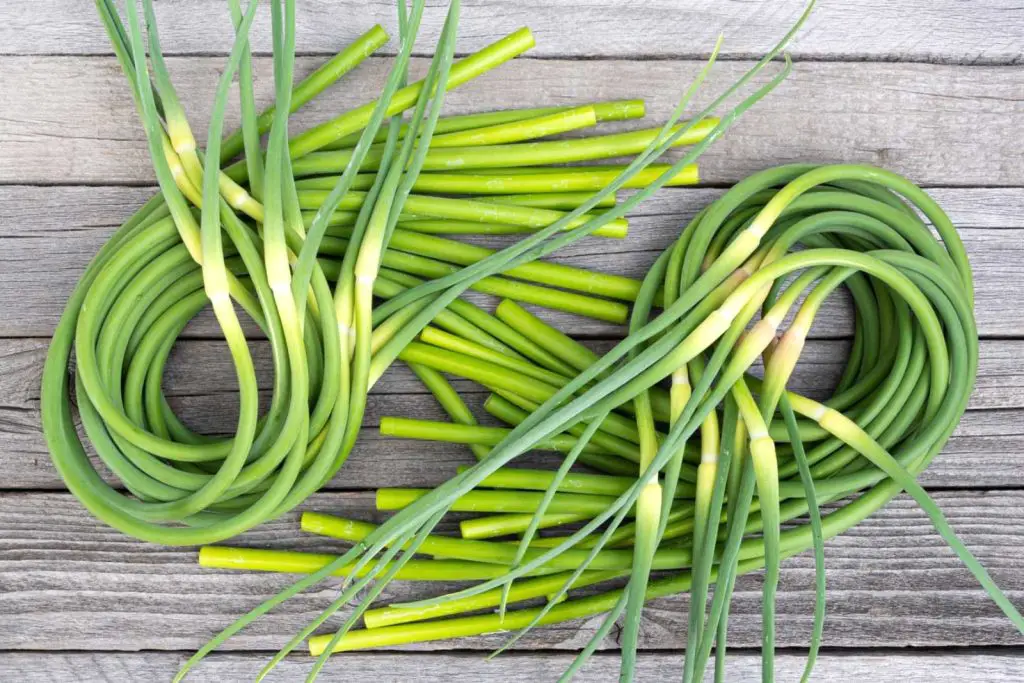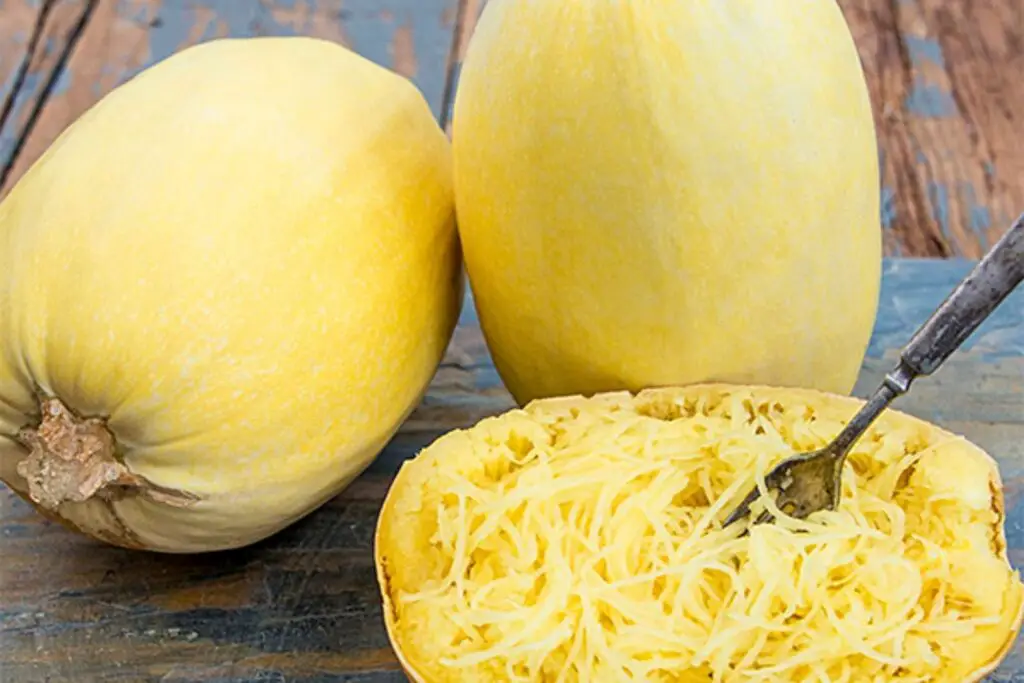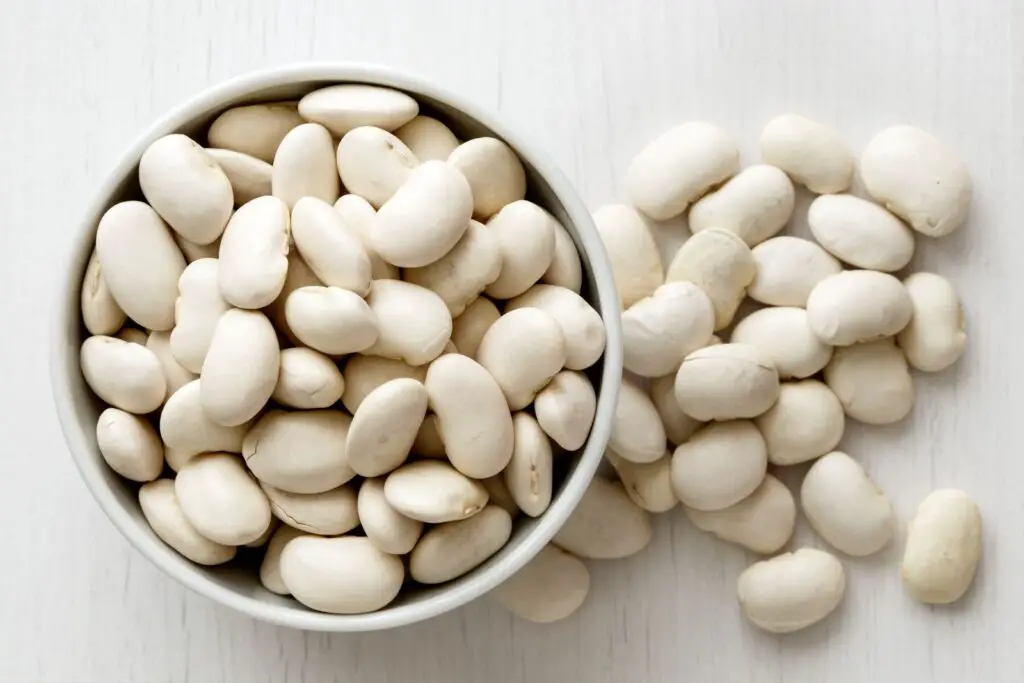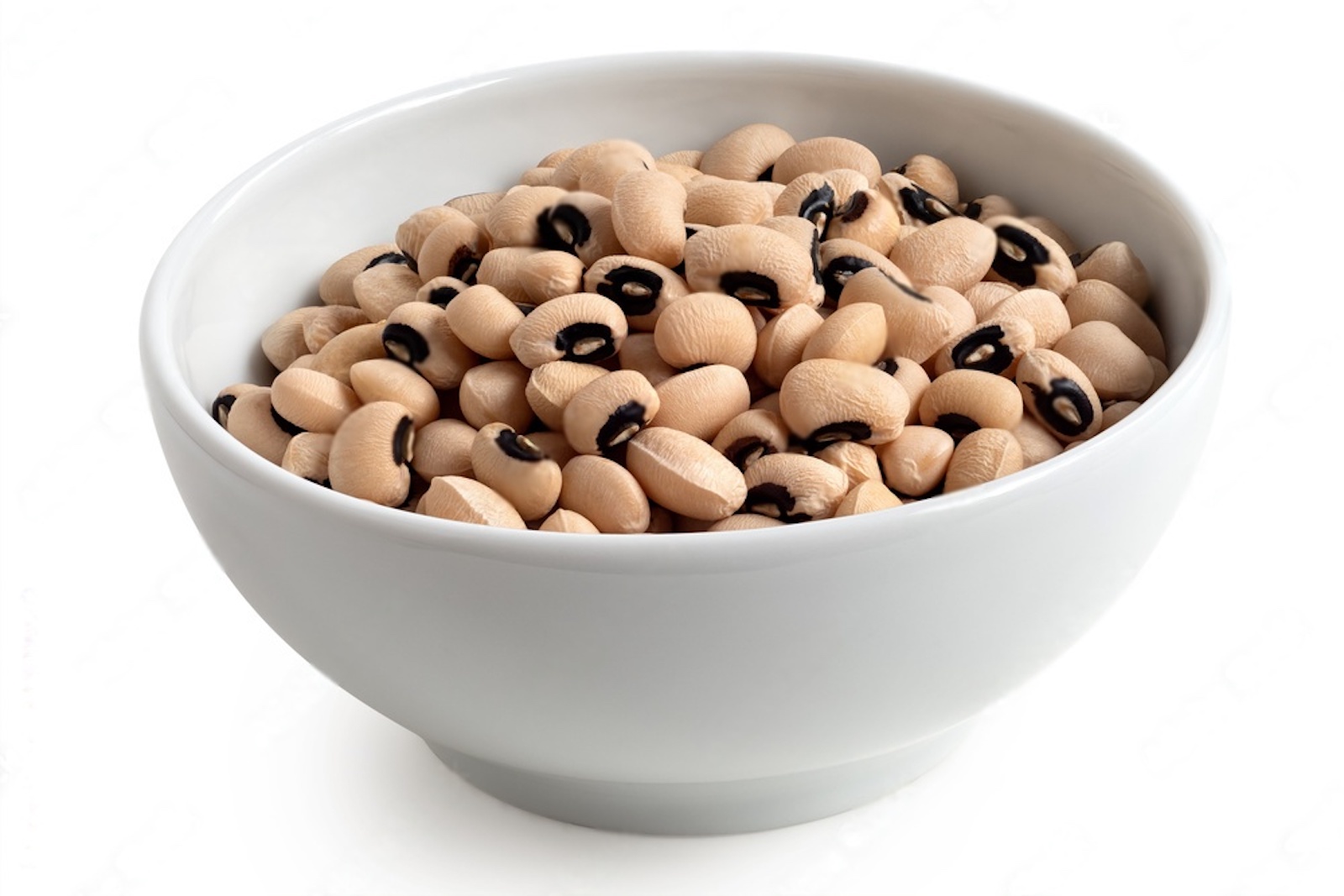
Cowpeas, a versatile and nutritious legume, are a staple in many culinary traditions around the world. These small, round beans come in various colors, including cream, white, black, red, brown, or speckled, and they are celebrated for their mild flavor and tender texture. Freezing cowpeas is an excellent way to preserve their freshness and enjoy them throughout the year, regardless of the growing season. By following a few simple steps, you can freeze cowpeas effectively while maintaining their quality. This article provides a detailed guide on how to freeze cowpeas to ensure they retain their flavor and texture for future use.
Here are simple steps on freezing cowpeas:
Step 1: Select fresh cowpeas
Selecting fresh cowpeas is a crucial first step in the process of freezing cowpeas effectively. The quality of the cowpeas you choose will significantly impact the taste and texture of the final product. Here’s an explanation of why this step is important:
- Quality and Flavor: Fresh cowpeas are plump, firm, and full of flavor. They have a mild, nutty taste that is most enjoyable when they are at their peak of freshness. Cowpeas that are past their prime or have started to deteriorate may have a starchy or bland flavor, which can affect the overall quality of your frozen cowpeas.
- Texture: The texture of cowpeas is another critical factor. Fresh cowpeas are tender and have a pleasant bite. If you select cowpeas that are not fresh, they may become mushy or grainy after freezing and thawing, which can be less appealing in dishes.
- Visual Inspection: When choosing cowpeas, look for pods that are vibrant and have no signs of mold, rot, or damage. Fresh cowpea pods are typically green or have the color characteristic of their specific variety. Avoid pods with blemishes, discoloration, or signs of pest damage.
- Optimal Freezing Results: Starting with fresh cowpeas ensures that the freezing process preserves their natural qualities. Freezing acts as a method of preservation, locking in the flavor and texture at the moment of freezing. If you freeze cowpeas that are already past their prime, the freezing process won’t magically restore their freshness.
Step 2: Wash and trim the cowpeas
Washing and trimming cowpeas is a crucial step in the process of freezing them. Here’s an explanation of why this step is important:
- Removal of Dirt and Debris: Cowpeas, like many fresh vegetables, can often have dirt, dust, or debris on their surface, especially if they were grown in an open field. Washing them under cold running water helps to remove these contaminants, ensuring that your frozen cowpeas are clean and safe for consumption. It also contributes to the overall hygiene of the preparation process.
- Preventing Microbial Contamination: Properly washing cowpeas helps eliminate potential pathogens or bacteria that might be present on the surface of the pods. This step is especially important if you plan to store your frozen cowpeas for an extended period, as it reduces the risk of microbial growth during freezing and storage.
- Enhancing Flavor and Texture: Cleaning cowpeas not only ensures their safety but also contributes to their flavor and texture. Any lingering dirt or debris can affect the taste and texture of the cowpeas, and washing them helps preserve their natural qualities.
- Trimming for Aesthetics and Quality: Trimming the ends of the cowpea pods serves both aesthetic and practical purposes. Removing any damaged or discolored portions not only makes the cowpeas look more appealing but also eliminates any potential sources of off-flavors or textures. It ensures that only the freshest and healthiest parts of the cowpeas are preserved through freezing.
Step 3: Blanch the cowpeas
Blanching is a pivotal step in the process of freezing cowpeas, and it serves several important purposes. Here’s an explanation of why blanching is crucial:
- Enzyme Inactivation: Cowpeas, like many vegetables, contain enzymes that can cause undesirable changes in flavor, color, and texture over time. Blanching involves briefly immersing the cowpeas in boiling water, which rapidly heats them. This heat treatment effectively deactivates these enzymes, preventing them from causing deterioration during freezing and storage. As a result, blanching helps maintain the cowpeas’ quality and freshness over an extended period.
- Color Retention: Blanching helps retain the vibrant color of cowpeas. The heat breaks down the chlorophyll in the peas, which can cause them to turn dull or brown over time. By blanching and subsequently cooling the cowpeas rapidly, you lock in their attractive green or colorful appearance, making them visually appealing in your dishes.
- Texture Preservation: Cowpeas subjected to blanching tend to maintain a better texture after freezing. The brief exposure to high heat softens the cell walls slightly, making the cowpeas less prone to becoming mushy or overly tough during freezing and subsequent cooking. This ensures that your frozen cowpeas retain a desirable texture when you eventually use them in recipes.
- Microbial Reduction: While blanching is primarily about enzyme inactivation and quality preservation, it also contributes to reducing the microbial load on the cowpeas. The high-temperature treatment can help eliminate surface bacteria, further enhancing the safety of your frozen cowpeas.
Here’s how the blanching process works:
- Boiling Water: Bringing a large pot of water to a boil is essential to provide the necessary heat for blanching.
- Ice Water Bath: The ice water bath immediately following blanching rapidly cools the cowpeas. This step, known as “shocking,” halts the cooking process, ensuring that the cowpeas are not overcooked and helping them retain their crispness and color.
Can I freeze fresh cowpea pods without blanching?
While it’s best to blanch cowpeas before freezing for optimal quality, you can freeze fresh cowpea pods without blanching if you prefer. However, be aware that they may not retain their texture and flavor as well as blanched cowpeas.
Are there any alternatives to blanching cowpeas before freezing?
While blanching is recommended for optimal quality, you can also try steaming cowpeas briefly as an alternative method. Steaming can help deactivate enzymes and maintain their texture and color.
Step 4: Drain and dry the cowpeas
After blanching cowpeas, the next important step is to drain and dry them properly. This step is crucial for several reasons, and here’s an explanation of its significance:
- Preventing Freezer Burn: One of the primary reasons for draining and drying the cowpeas is to remove excess moisture. Excess moisture can lead to freezer burn, a condition that occurs when water molecules on the surface of the food freeze and form ice crystals. These ice crystals can cause the food to become dehydrated, resulting in changes in texture and taste. By draining and drying the cowpeas, you minimize the risk of freezer burn, ensuring that your frozen cowpeas remain in optimal condition.
- Texture Preservation: Removing excess moisture helps maintain the desired texture of the cowpeas. When cowpeas contain too much water, they can become mushy or soggy during freezing and thawing, which can be less appealing in recipes. Properly draining and drying them before freezing ensures that they maintain their firmness and bite when cooked.
- Preventing Ice Formation: By removing surface moisture, you also reduce the likelihood of ice crystals forming on the cowpeas. These ice crystals can lead to changes in flavor and texture, and they may cause the cowpeas to clump together in the freezer.
Here’s how to effectively drain and dry the blanched cowpeas:
- Colander: Using a colander allows excess water to drain away from the cowpeas. The colander’s perforated design ensures efficient drainage.
- Air Drying: Allowing the cowpeas to air dry in the colander or on a clean, dry surface enables any remaining moisture to evaporate. This step is important because even small amounts of moisture can contribute to freezer burn and textural changes.
- Paper Towels: Gently patting the cowpeas dry with paper towels is an alternative method. This helps absorb any surface moisture that may still be present after draining.
Step 5: Arrange the cowpeas for freezing
The way you arrange the cowpeas before freezing is an important step in ensuring that they remain separate and don’t clump together in the freezer. Here’s an explanation of why this step is crucial:
- Preventing Clumping: Cowpeas have a tendency to stick together when frozen if they are initially placed in the freezer in a pile or clump. This can make it difficult to portion them out when you only need a portion for a recipe. By spreading them out in a single layer on a baking sheet or tray, you ensure that they freeze individually and don’t form a solid mass.
- Uniform Freezing: Arranging cowpeas in a single layer promotes uniform freezing. When items are frozen together in a lump, the center of the lump can freeze more slowly than the outer portions, which can lead to uneven texture and quality. By ensuring that the cowpeas are not touching each other, you allow for consistent and thorough freezing, preserving their flavor and texture.
- Ease of Portioning: Once the cowpeas are frozen individually, it becomes easier to portion them out as needed for your recipes. You can take out just the amount you require without having to thaw and separate a large clump of frozen cowpeas.
- Minimizing Freezer Burn: Proper spacing during freezing also reduces the chances of cowpeas touching the sides of containers or freezer bags, which can lead to freezer burn. Freezer burn occurs when food comes into contact with air, causing dehydration and affecting quality. Keeping them separate helps maintain their freshness.
To execute this step effectively, you can use a baking sheet or tray lined with parchment paper or a silicone baking mat. Make sure the cowpeas are spread out evenly in a single layer with some space between them. Once they are individually frozen, you can proceed to the next steps of packaging and storing them for long-term freezer storage.
Step 6: Flash-freeze the cowpeas
Flash-freezing is a technique used to freeze food items quickly at extremely low temperatures. When it comes to cowpeas, this step is essential for several reasons, and here’s an explanation of its significance:
- Preserving Freshness: Flash-freezing rapidly lowers the temperature of the cowpeas, locking in their freshness at the moment of freezing. This helps maintain their natural flavor, texture, and color. By minimizing the time the cowpeas spend in the transition from room temperature to freezing temperature, you reduce the risk of deterioration and flavor loss.
- Preventing Clumping: Flash-freezing individually is particularly important to prevent the cowpeas from sticking together. When you place cowpeas in the freezer without flash-freezing, they may initially be separate, but as they gradually freeze, they can adhere to one another. Flash-freezing ensures that each cowpea remains distinct, making it easier to portion them out later for your recipes.
- Uniform Freezing: Flash-freezing helps achieve uniform freezing throughout each individual cowpea. When cowpeas are frozen slowly, ice crystals can form inside the cells, potentially affecting their texture and causing them to become mushy. Flash-freezing minimizes the formation of large ice crystals, preserving the desired texture.
Here’s how to execute the flash-freezing process:
- Baking Sheet: Use a baking sheet or tray that you’ve already arranged the cowpeas on in a single layer, as mentioned in the previous step.
- Freezer Placement: Place the baking sheet with the cowpeas in the coldest part of your freezer. Ensure there’s enough space around the sheet for cold air to circulate freely.
- Freezing Time: Leave the cowpeas in the freezer for a few hours, or until they are firm to the touch. The exact freezing time may vary depending on your freezer’s temperature and the quantity of cowpeas.
- Once the cowpeas are flash-frozen, they can be easily transferred to airtight containers or freezer bags for long-term storage. The individually frozen cowpeas will remain separate and maintain their quality, making them convenient to use in various recipes, such as soups, stews, and salads.
Step 7: Package and seal the cowpeas
Once you have flash-frozen the cowpeas, the next critical step is to properly package and seal them. This step is essential for maintaining the quality of your frozen cowpeas during storage, and here’s an explanation of its importance:
- Protection from Air and Moisture: Packaging cowpeas in airtight freezer bags or containers creates a barrier that prevents air and moisture from coming into contact with the cowpeas. Exposure to air can lead to freezer burn, while moisture can cause ice crystals to form on the cowpeas, potentially affecting their texture and flavor.
- Minimizing Freezer Burn: Freezer burn occurs when water molecules on the surface of the food freeze and form ice crystals. This dehydration can result in changes in texture and taste. By removing as much air as possible from the packaging and sealing it securely, you reduce the risk of freezer burn.
- Maintaining Flavor and Texture: Properly sealed packaging helps preserve the cowpeas’ natural flavor and texture. The absence of air and moisture allows the cowpeas to remain in their optimal condition, ensuring they taste and feel as fresh as the day they were frozen.
Here’s how to effectively package and seal the cowpeas:
- Airtight Freezer Bags: Use high-quality, airtight freezer bags specifically designed for long-term food storage. These bags are made of thicker, more durable materials that provide an effective barrier against air and moisture. Place the flash-frozen cowpeas inside the bags.
- Container Option: Alternatively, you can use airtight freezer-safe containers. These containers should also be designed for freezer use and have tight-sealing lids. Arrange the cowpeas in the container, leaving some space at the top to allow for any potential expansion during freezing.
- Removing Air: Squeeze as much air as possible out of the freezer bags before sealing them. For containers, ensure that the lid is tightly sealed to prevent air from entering. This step is critical in minimizing the risk of freezer burn.
- Secure Sealing: Ensure that the bags or containers are securely sealed. Check for any gaps or openings that might allow air or moisture to enter. A properly sealed package is your best defense against freezer burn and quality degradation.
Is vacuum-sealing necessary for freezing cowpeas?
Vacuum-sealing is not necessary but can help extend the shelf life of frozen cowpeas by removing air from the packaging. It’s a useful option if you have a vacuum sealer, but airtight freezer bags or containers work well too.
Should I freeze cowpeas in small or large batches?
Freezing cowpeas in smaller batches allows for easier portioning and minimizes the need to thaw more than you need for a recipe. This can help reduce waste and ensure fresher cowpeas for future use.
Step 8: Label and date the packages
Labeling and dating the packages of frozen cowpeas is a crucial organizational step in the freezing process. Here’s an explanation of why this step is important:
- Rotation and Freshness: Labeling the packages with the date of freezing allows you to keep track of how long the cowpeas have been in the freezer. This is essential for ensuring that you use the oldest cowpeas first (first in, first out, or FIFO) to maintain their freshness. By following this principle, you reduce the risk of cowpeas being forgotten and left in the freezer for an extended period, which can affect their quality.
- Quality Control: Frozen cowpeas have a finite period of optimal quality. Over time, they may experience changes in flavor, texture, and nutritional value. Knowing the freezing date helps you assess the cowpeas’ freshness and make informed decisions about how to use them in your recipes.
- Inventory Management: Labeling packages with the date of freezing also helps with inventory management. You can easily identify how much of the frozen cowpeas you have and when they were frozen, which is especially useful when planning meals and grocery shopping.
- Avoiding Food Waste: Properly labeling and dating packages can help you avoid food waste. If you know the age of your frozen cowpeas, you can plan meals accordingly, ensuring that you incorporate them into your cooking before they lose their quality.
To label and date the packages effectively:
- Use a permanent marker to write the freezing date directly on the freezer bags or containers. Be sure to write the date clearly so that it’s easy to read.
- If you’re using multiple bags or containers, consider labeling each one individually. This allows for easy identification of specific batches.
- When rotating your frozen cowpeas, always use those with the earliest freezing date first. This ensures that you make the most of their freshness and flavor.
Step 9: Store in the freezer
Storing the properly packaged cowpeas in the freezer is the final step in the freezing process. Here’s an explanation of why this step is important:
- Preservation of Quality: The freezer is an ideal environment for preserving the quality of cowpeas and extending their shelf life. Freezing effectively stops the growth of microorganisms and enzyme activity, which can cause spoilage and quality deterioration.
- Long-Term Storage: Cowpeas, when frozen and stored at the right temperature, can remain safe and maintain good quality for an extended period. By storing them in the freezer, you can enjoy the convenience of having a versatile ingredient on hand for up to 8-12 months or even longer, depending on your freezer’s temperature and performance.
- Convenient Availability: Storing cowpeas in the freezer makes them readily available for use in various recipes throughout the year. Whether you’re preparing soups, stews, salads, or side dishes, having frozen cowpeas at your disposal allows for quick and convenient meal planning.
To store the packaged cowpeas in the freezer effectively:
- Place the labeled and dated packages in a dedicated freezer section or compartment of your freezer. This area is typically the coldest part of the freezer and ensures consistent freezing temperatures.
- Ensure that the packages are arranged neatly, with adequate space between them to allow for proper air circulation. Avoid overloading the freezer, as this can affect its ability to maintain a low temperature.
- Keep the cowpeas away from items with strong odors to prevent them from absorbing unwanted flavors.
- Periodically check the temperature of your freezer to ensure it is operating at or below 0°F (-18°C), as recommended for safe and long-term storage of frozen foods.
Other related questions
How do I defrost cowpeas?
To defrost cowpeas, transfer the frozen cowpeas from the freezer to the refrigerator. Allow them to thaw in the refrigerator for several hours or overnight. Alternatively, you can place the frozen cowpeas in a sealed plastic bag and submerge them in a bowl of cold water until they thaw, changing the water periodically to hasten the process.
Can I refreeze cowpeas?
It is generally not recommended to refreeze cowpeas after they have been thawed. Repeated freezing and thawing can lead to changes in texture and flavor, reducing the overall quality of the cowpeas. It is best to use the thawed cowpeas promptly in your recipes to minimize food waste and ensure optimal taste and texture.
How do I know if the cowpeas have gone bad after being frozen?
To determine if frozen cowpeas have gone bad, inspect them for signs of freezer burn, which can manifest as dry, discolored, or crystallized areas on the surface. If the cowpeas have an off-putting odor or show signs of mold or freezer odors, they may have deteriorated and should be discarded. Additionally, if there are any unusual or rancid flavors upon cooking or tasting, it’s a sign that the cowpeas have gone bad and should not be consumed.
Can I freeze cowpeas with seasoning or spices already added?
Yes, you can freeze cowpeas with seasonings or spices added. However, it’s important to note that some seasonings may intensify in flavor during freezing, so consider adjusting the seasoning levels accordingly before serving.
What recipes can I use frozen cowpeas in?
Frozen cowpeas are versatile and can be used in a wide range of recipes. They work well in soups, stews, salads, stir-fries, and as a side dish. Experiment with different cuisines and dishes to discover your favorite ways to use them.
Can I freeze cowpea dishes that are already cooked?
Yes, you can freeze dishes made with cowpeas, such as soups or stews. Allow the dish to cool completely before portioning it into airtight containers or freezer bags. Be sure to label and date the containers for reference.

